Departure Date: October 3 - 7, 2025
Compiled By: Geoff Lockwood
Trip Leaders: Geoff Lockwood
Toll Free: 800.328.8368
Phone: 512.328.5221
South Africa: Wakkerstroom Extension 10/3/2025-10/7/2025

Our drive down to Wakkerstroom passed through a mosaic of open natural grasslands and croplands, many being prepared for spring plantings. Conditions were windy and birding was generally slow, but around halfway, I picked up the distinctive shapes of two Secretarybirds striding through the grassland next to the road. I pulled off onto the verge, and we watched as these iconic birds methodically searched through the veld. Some of the participants exited the minibus to get photographs, and the birds took off—giving great flight views. Back on the road, and closer to Wakkerstroom, there was another pair of these stately ‘terrestrial eagles’ next to the road. We watched as one of the birds suddenly dashed after something it had startled. It stamped down a few times, and then picked up a mouse and swallowed it. A stunning observation of this species’ unusual hunting technique.
Next came a group of three Southern Bald Ibises feeding busily in rough veld next to the road—two of our target birds already in the bag, and we had yet to reach the town!
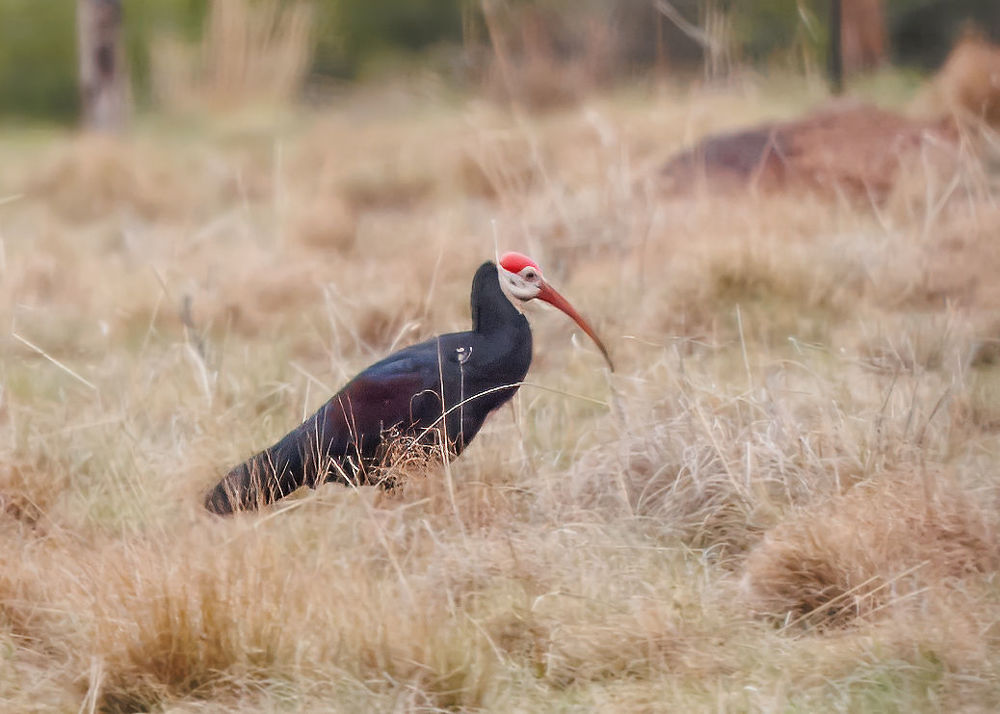
Southern Bald Ibis © Geoff Lockwood
The afternoon drive towards Amersfoort brought a number of new birds, including Fan-tailed and Long-tailed widowbirds, Southern Gray Crowned-Crane, South African Swallow, Southern Anteater Chat, and Red-winged Francolin, as well as our first sightings of troops of charismatic Meerkats scampering across the veld. A stop on the bridge over the wetland gave great views of a family of Spot-necked Otters foraging below us.
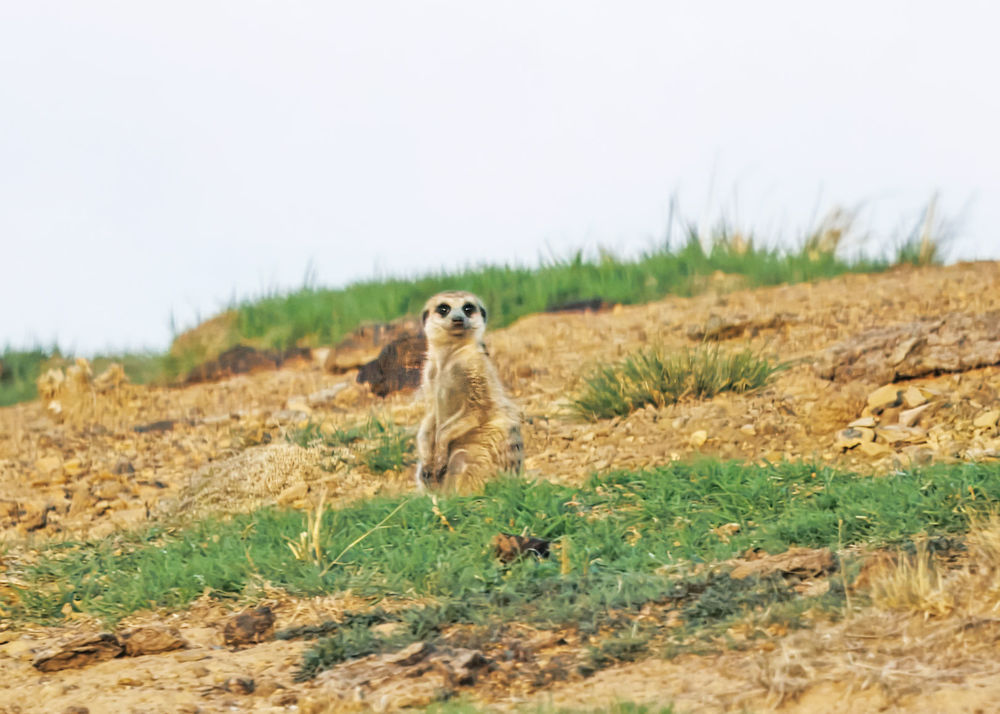
Meerkat lookout © Geoff Lockwood
We started early the next morning, heading back out towards Amersfoort in search of Blue Bustards—one of the most striking members of the family. Our local guide, Norman Ncube, had scouted the area, and we enjoyed great scope views of a male patrolling a rocky ridge. Further along, a short detour down a side road brought great views of some nesting Black-winged Lapwings, plus a glimpse of an Eastern Clapper Lark—the benefits of local knowledge! A quick stop at the wetland on the way back brought great views of a pair of Spotted Eagle-Owls, and then it was back to the lodge for a hearty breakfast.
After our meal, we headed up into the hills southeast of town for what turned out to be one of our best days’ birding on these tours. The grasslands around Wakkerstroom are home to an impressive number of endemic, or range-restricted species, and we began to record a procession of new species: Denham’s Bustard, Sentinel Rock-Thrush, Yellow-breasted Pipit, Eastern Long-billed Lark, Buff-streaked Chat, Wailing and Wing-snapping cisticolas, Lanner Falcons, and more. Closer to Dirkiesdorp, we came across a male Denham’s Bustard strutting his stuff along a rise, his incredible gleaming white neck feathers fully puffed out and creating a signal visible for miles across the rolling hills. A couple of “knock me down” calls, and Norman located a pair of White-bellied Bustards moving slowly down the valley below us. Our third bustard species for the day!
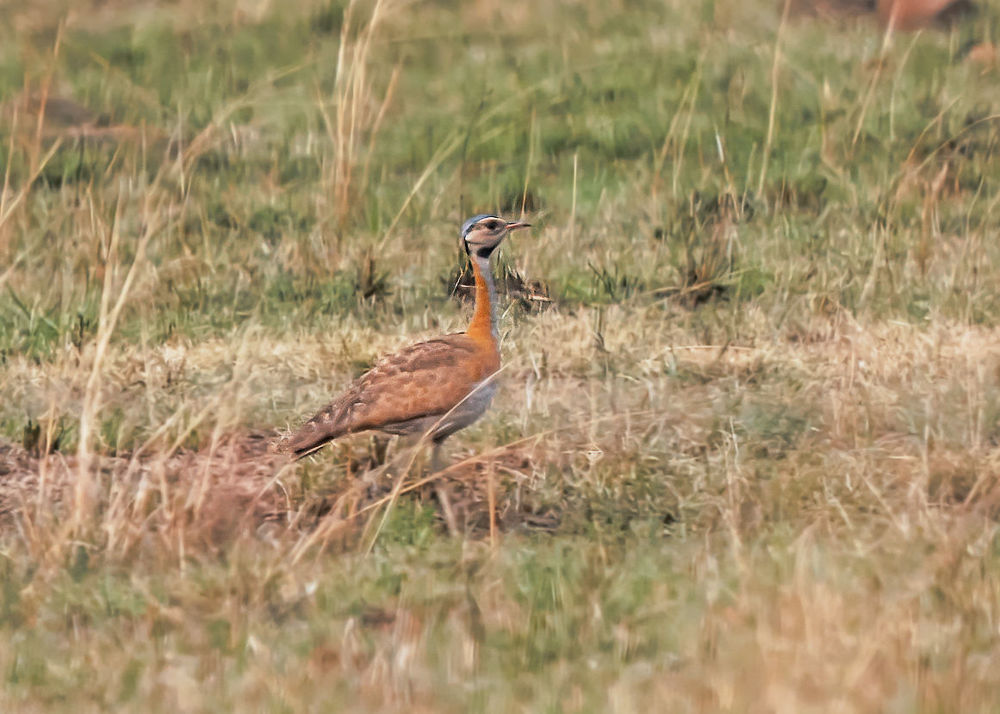
White-bellied Bustard © Geoff Lockwood
Next, we came across a group of four of these beautiful small bustards feeding next to the road, and then another pair—even closer this time, and in more open habitat. Wow, eight White-bellied Bustards! Our best day ever for this often-elusive species!
Continuing back to Wakkerstroom, we flushed several flocks of striking Zebra Waxbills from the roadside and, at our lunch stop at a small river, we added Red-collared Widowbird and African Yellow Warbler. A stop in mixed bush and grassland gave us our first Drakensberg Prinias while our next, in a patch of scrubby forest, produced a stunning male Greater Double-collared Sunbird! A Barratt’s Warbler was calling stridently at the same spot but stubbornly refused to come closer when I played the call.
On our last morning, some of the group headed back to the wetland early in hopes of finding an African Rail or Red-chested Flufftail. We had the rail responding but failed to catch even a glimpse of this skulker, and there were no sounds from the flufftail—a species we’ve seen well on some previous tours. We did, however, have an amazingly cooperative Red-throated Wryneck on the bridge, calling from only yards away for several minutes. We headed back for breakfast.
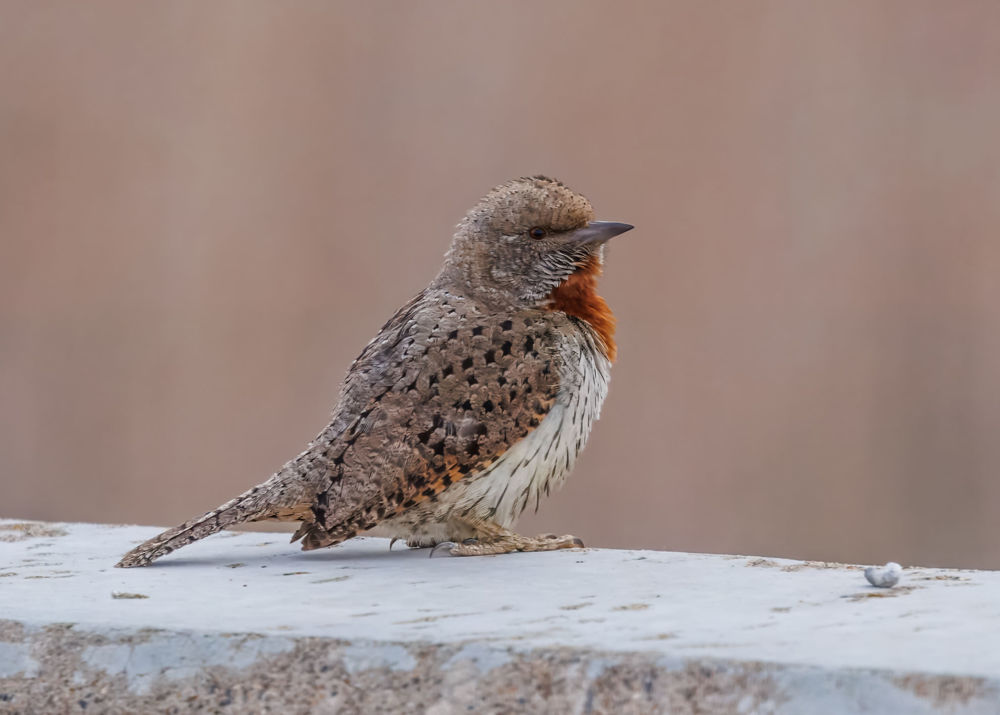
Red-throated Wryneck © Geoff Lockwood
We had missed Ground Woodpecker on the Cape leg of the main tour and, after we had breakfasted and packed, we headed for Zaaihoek Dam in the hopes of finally catching up with this unusual endemic. We stopped on the bridge over the outflow from the dam and carefully scanned the rock outcrops along the river. A splash of orange, black, and white from the rocks near the traditional woodpecker perch drew our attention to a pair of Mocking Cliff-Chats—a new species for the combined tour. Then a distant series of “Chack . . chack” calls focused our search on a particular section of rocky cliff, and there they were—two birds perched up on the rocks looking down at us. I set the scope on them, and the group enjoyed long, repeat views of these great birds, at times with a male Cape Rock-Thrush in the same view.
Heading back to Wakkerstroom and the drive through to Johannesburg, we flushed a Mountain Wheatear from the side of the road—another new bird for the combined tours.
After our great drive down two days earlier we were hoping for more Secretarybirds, but a strong wind was blowing and birds were scarce. The weather was changing, and by the time we had reached the Suikerbosrand Nature Reserve it was starting to rain. This was to be the last stop of the tour, and we were hoping for a number of new species, so we took advantage of a gap in the showers to search the picnic area. First up were a party of White-browed Sparrow-Weavers, followed by some Grosbeak Weavers and several Black-fronted Bulbuls, their striking red eyes and red eye-rings setting them apart from the Cape and Common bulbuls we had seen earlier on the main tour. We also had some great, close views views of a pair of Mocking Cliff-Chats. A great way to wrap up a very successful and happy tour!
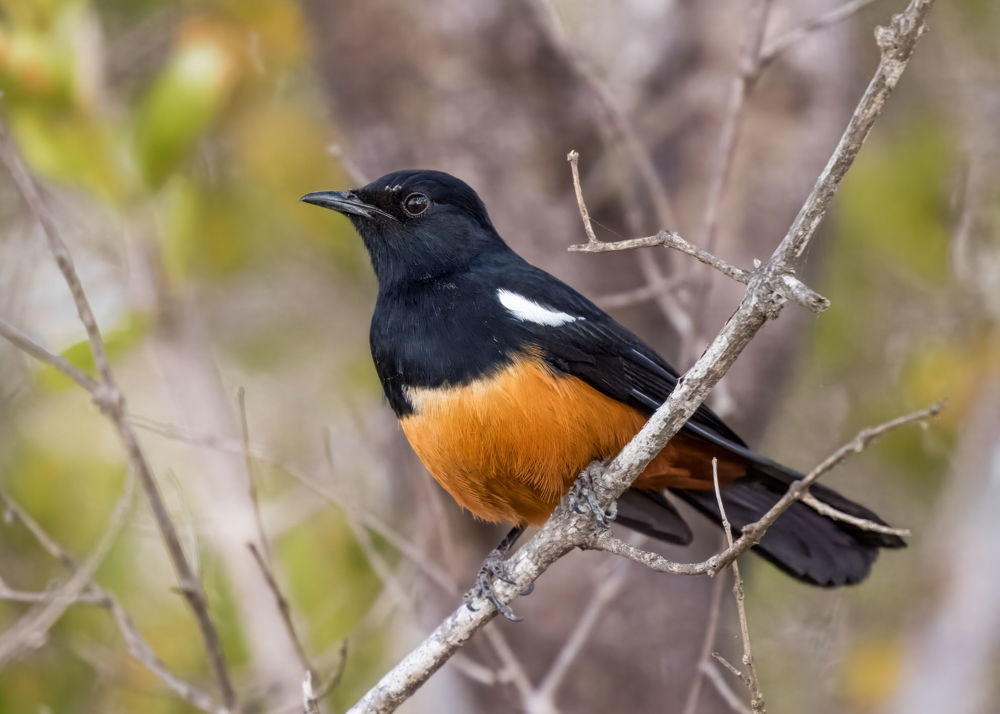
Mocking Cliff-Chat male © Geoff Lockwood
Back at the vehicle, it was time to pack away our optics and then head for the airport for the long flights home.
A complete list of the birds recorded on our tour can be found at: ebird.org/tripreport/419110
Description for the next departure of this tour.
Geoff Lockwood's upcoming tour schedule.
ITINERARY:
Day 1: October 3, 2025 – Flight from Kruger to Johannesburg; night at Peermont Mondior
Day 2: October 4, 2025 – Drive to Wakkerstroom; Wakkerstroom wetland and Amersfoort road
Day 3: October 5, 2025 – Early drive towards Amersfoort; part of the Groenvlei loop and drive to Dirkiesdorp
Day 4: October 6, 2025 – Wakkerstroom wetland; Zaaihoek Dam and drive to Johannesburg via Suikerbosrand Nature Reserve; flights home.

